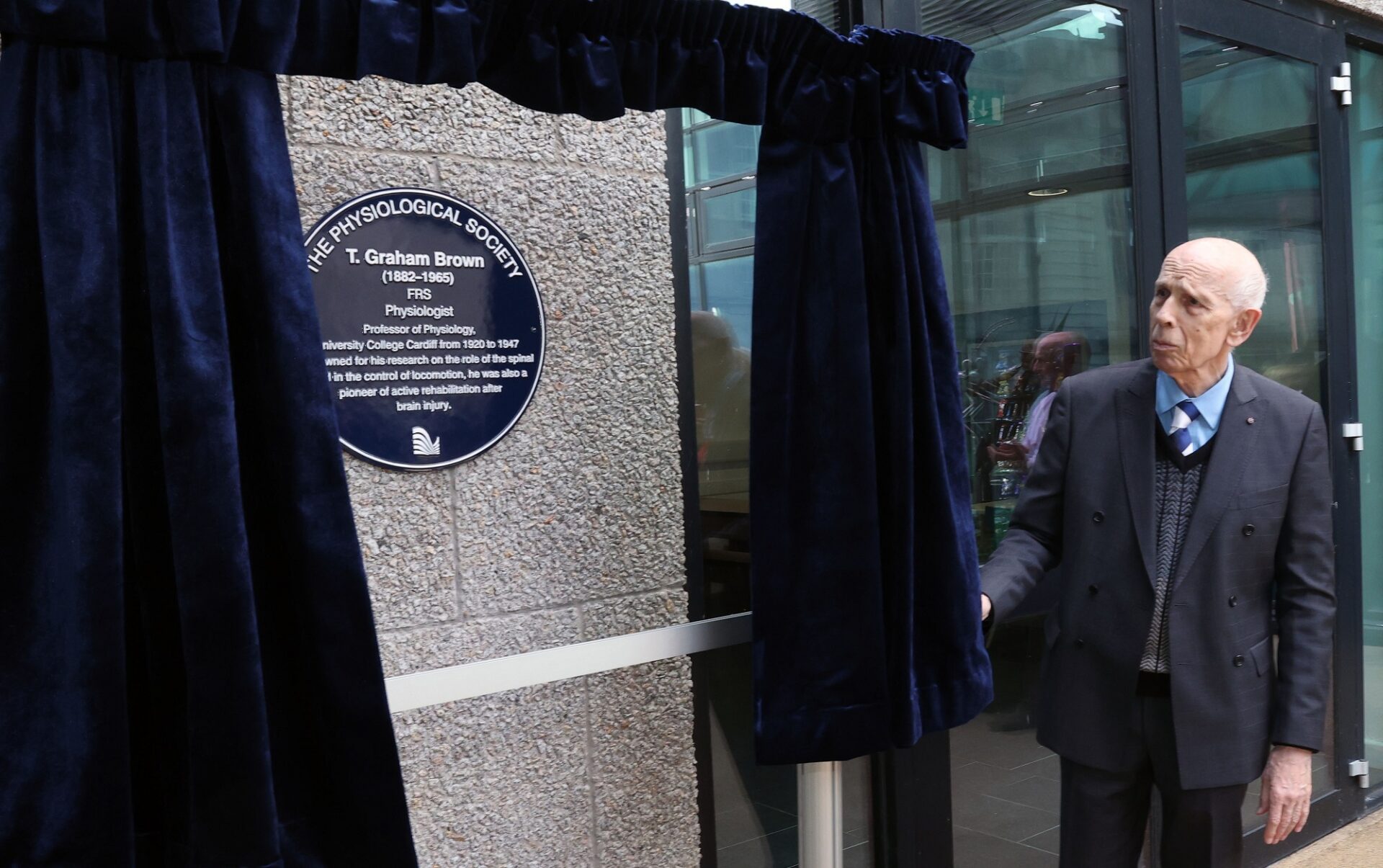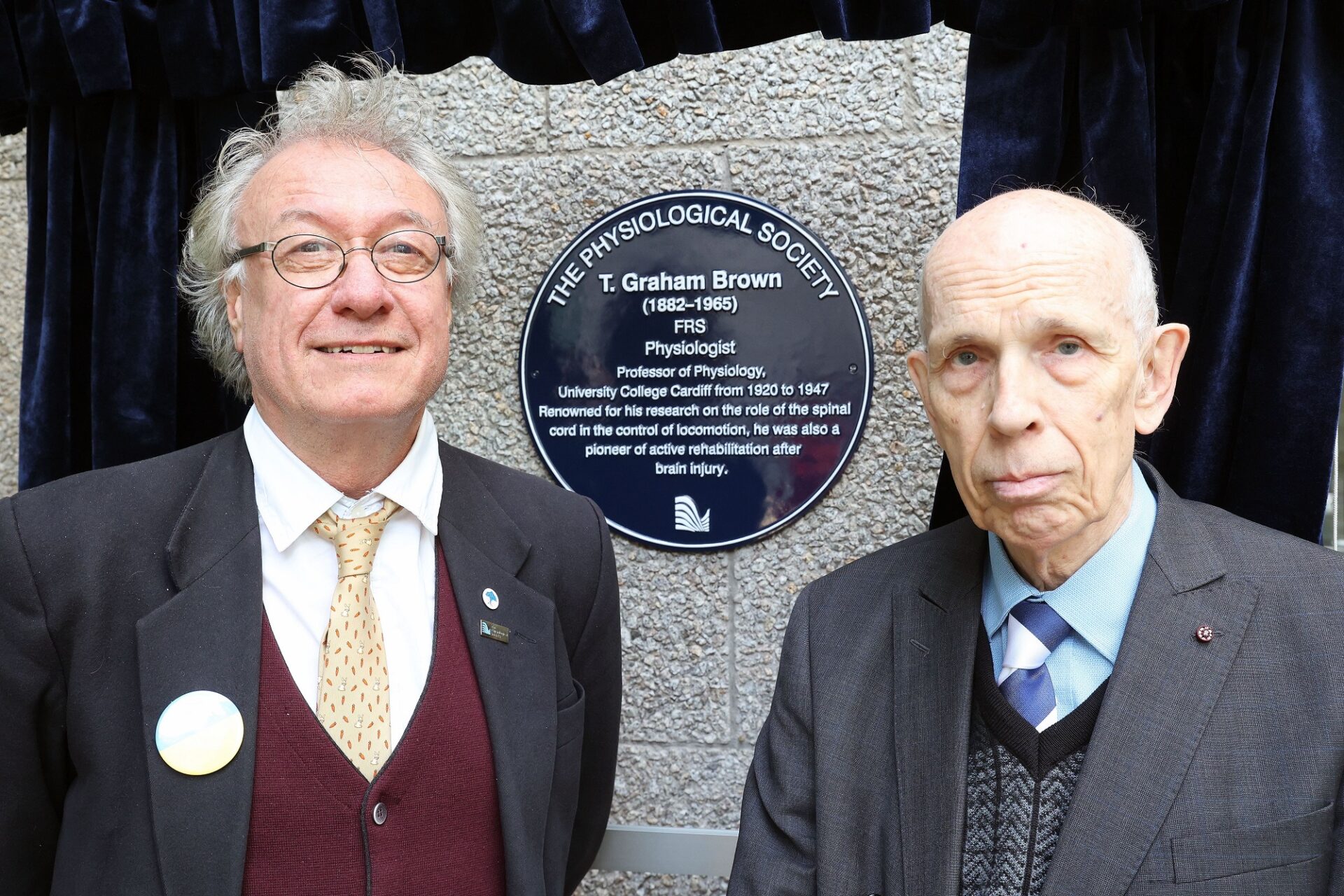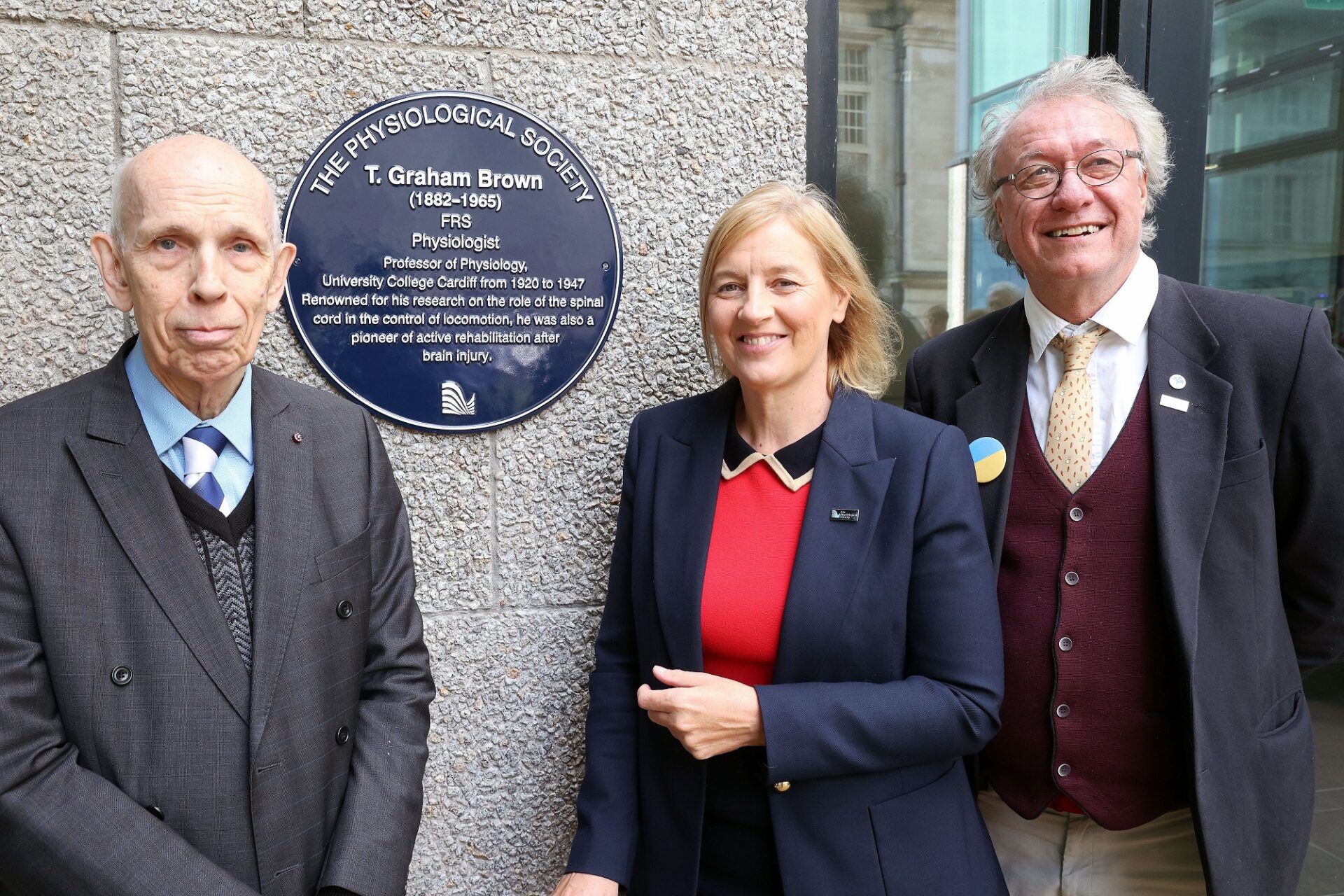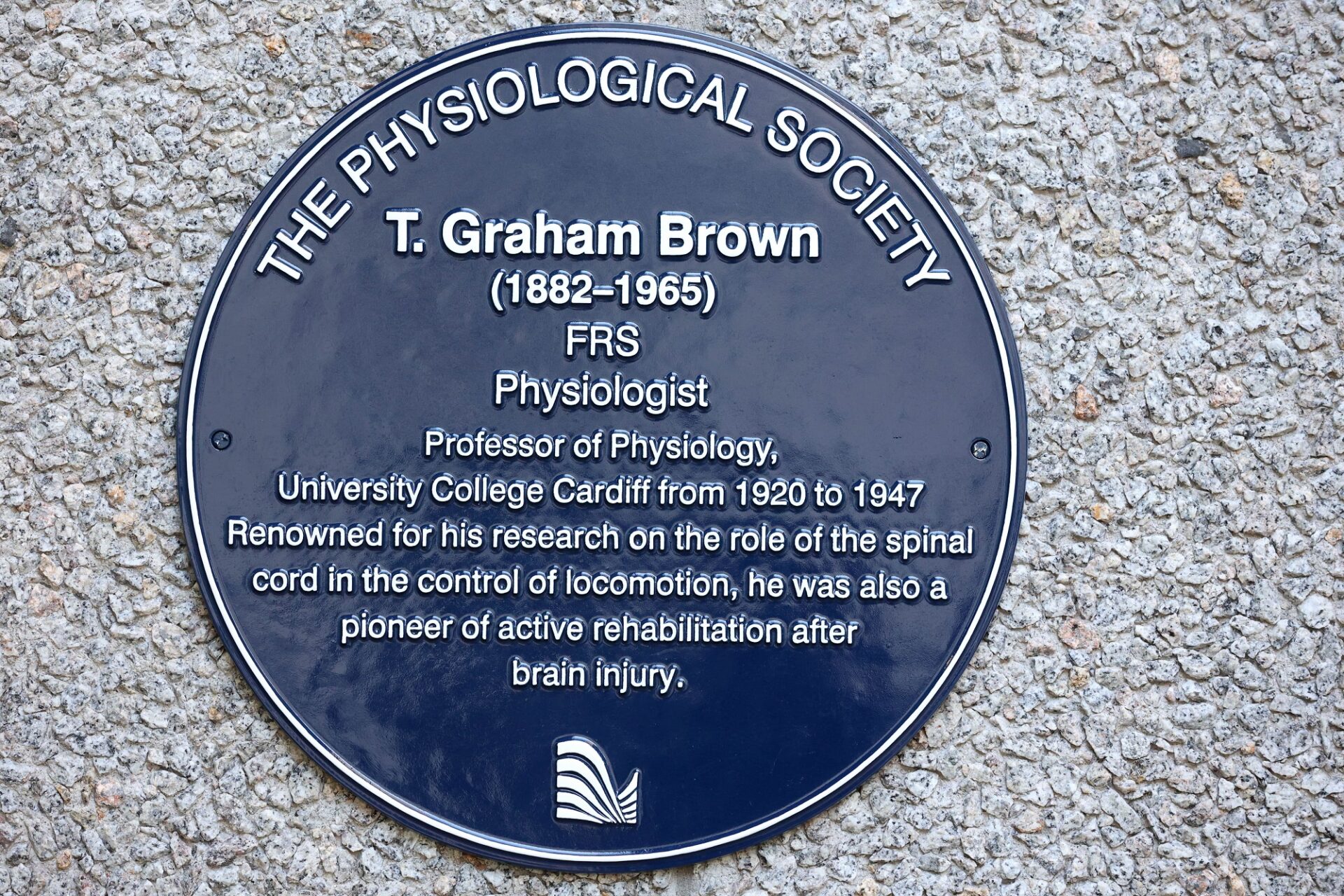Professor Thomas Graham Brown (1882 – 1965) was a physiologist renowned for his neurological research, and a British Alpine climber. In 1920 he was appointed chair in Physiology at the University of Wales in Cardiff, a position he held until 1947. The Physiological Society was honoured this week to unveil a blue plaque to celebrate his life and work. He is best known for his studies on the neural control of rhythmic movement described in a series of papers published in the Quarterly Journal of Experimental Physiology under the general title of ‘Studies in the physiology of the nervous system.’

While at the University of Wales in Cardiff, Graham Brown was also head of the then new Cardiff Institute of Physiology (CIP). He oversaw considerable growth in the reputation of what would become the University of Wales College of Medicine, now known as Cardiff University School of Medicine.
Professor Graham Brown was the first to propose a half-centre model of motor neurons in which two groups of spinal neurons can produce basic rhythmic movement. His model was ignored at the time of publishing because it opposed Sir Charles Scott Sherrington’s popular theory of movement. It was only acknowledged fifty years later in the 1960s when Professor Graham Brown’s model set the groundwork for the field of motor control and was supported by Professor Anders Lundberg and Professor Elzbieta Jankowska’s research. The theory reflects today’s widely accepted concept of central pattern generators in motor neurons.

The plaque was unveiled by Professor Ole Peterson of Cardiff University. Professor Frank Sengpiel, Head of Neuroscience at Cardiff University’s School of Biosciences, said,
“The unveiling of this blue plaque commemorating Thomas Graham Brown marks more than 100 years of cutting-edge research in physiology at what is now Cardiff University. It is a fitting tribute to Brown’s work that research into neurodegenerative conditions, such as Parkinson’s disease, features prominently at Cardiff today.”
Professor David Paterson, President of the Physiological Society, said,
“We are honoured to be in Cardiff to unveil this plaque to remember Professor Thomas Graham Brown. This is the fourteenth unveiling in The Physiological Society’s Blue Plaque scheme which is intended to raise the visibility of physiology and give the wider public an insight into the positive role that ‘the science of life’ plays in their everyday lives. We hope that these plaques will spark curiosity and help inspire new generations to get involved in the physiological sciences.”

The Physiological Society’s blue plaque scheme recognises outstanding physiologists. The Physiological Society will be unveiling further blue plaques at institutions across the UK and Ireland celebrating and recognising institutions where distinguished physiologists have made significant contributions to the discipline.
The plaques provide long-term recognition of the impact these scientists and their science has had, and by extension these plaques provide a marker of excellence for the universities that they adorn.


